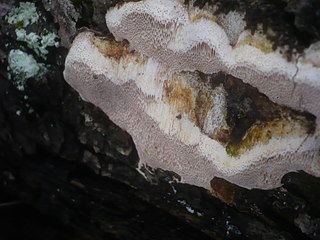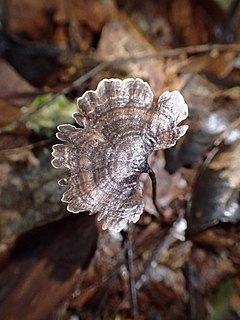
China, officially the People's Republic of China, is a country in East Asia and unitary one-party socialist republic led by the Communist Party of China (CPC). It is the world's most populous country, with a population of more than 1.43 billion. China follows a single standard time offset of UTC+08:00 even though it spans five geographical time zones and borders 14 countries, the second most of any country in the world after Russia. Covering an area of approximately 9.6 million square kilometers, it is the world's third or fourth largest country. The country is officially divided into 23 provinces, five autonomous regions, and four direct-controlled municipalities of Beijing, Tianjin, Shanghai, and Chongqing, as well as two special administrative regions: Hong Kong and Macau.

Hong Kong, officially the Hong Kong Special Administrative Region of the People's Republic of China (HKSAR), is a metropolitan area and special administrative region of China on the eastern Pearl River Delta in South China. With over 7.5 million residents of various nationalities in a 1,104-square-kilometre (426 sq mi) territory, Hong Kong is one of the most densely populated places in the world.

Taiwan, officially the Republic of China (ROC), is a country in East Asia. It shares maritime borders with the People's Republic of China (PRC) to the northwest, Japan to the northeast, and the Philippines to the south. The main island of Taiwan has an area of 35,808 square kilometres (13,826 sq mi), with mountain ranges dominating the eastern two-thirds and plains in the western third, where its highly urbanised population is concentrated. The capital is Taipei, which, along with New Taipei and Keelung, forms the largest metropolitan area of Taiwan. Other major cities include Kaohsiung, Taichung, Tainan and Taoyuan. With 23.57 million inhabitants, Taiwan is among the most densely populated countries in the world.
9 (nine) is the natural number following 8 and preceding 10.

The Polyporaceae are a family of poroid fungi belonging to the Basidiomycota. The flesh of their fruit bodies varies from soft to very tough. Most members of this family have their hymenium in vertical pores on the underside of the caps, but some of them have gills or gill-like structures. Many species are brackets, but others have a definite stipe – for example, Polyporus badius.

Perenniporia subacida is a species of poroid fungus in the family Polyporaceae. It is a plant pathogen that infects Douglas firs. The fungus was originally described in 1885 by American mycologist Charles Horton Peck. Marinus Anton Donk transferred it to the genus Perenniporia in 1967. The four varieties of this fungus originally proposed by Peck, namely Polyporus subacidus var. stalactiticus, P. subacidus var. tenuis, P. subacidus var. tuberculosus and P. subacidus var. vesiculosus, have been shown to be synonyms. The species is inedible.
Abundisporus quercicola is a species of bracket fungus that grows on living oaks in temperate forests in the foothills of the Himalaya. The fruit bodies are perennial, grey to black above with concentric markings and white below. The fungus grows to 7 cm wide and 5 cm thick, projecting up to 5 cm from the substrate. The basidiospores are yellow.

Perenniporia is a cosmopolitan genus of bracket-forming or crust-like polypores in the family Polyporaceae. They are dimitic or trimitic with smooth, thick-walled basidiospores and cause a white rot in affected wood.
Perenniporia piceicola is a species of poroid crust fungus that is found on fallen spruce in Yunnan province, China. Basidiocarps are corky in texture, 5 cm (2 in) or more across with a characteristic pale yellow pore surface. The basidiospores are ellipsoid and hyaline and very large for the genus, up to 13 μm in length.

Perenniporia medulla-panis is a species of poroid fungus in the family Polyporaceae. It is a plant pathogen that infects stone fruit trees. The species was first described by Nikolaus Joseph von Jacquin in 1778. Marinus Anton Donk transferred it to the genus Perenniporia in 1967.

Xinjiang, officially the Xinjiang Uygur Autonomous Region(XUAR), is an autonomous region of the People's Republic of China (PRC), located in the northwest of the country close to Central Asia. Being the largest province-level division of China and the 8th-largest country subdivision in the world, Xinjiang spans over 1.6 million square kilometres (620,000 sq mi) and has about 25 million inhabitants. Xinjiang borders the countries of Mongolia, Russia, Kazakhstan, Kyrgyzstan, Tajikistan, Afghanistan, Pakistan and India. The rugged Karakoram, Kunlun and Tian Shan mountain ranges occupy much of Xinjiang's borders, as well as its western and southern regions. The Aksai Chin and Trans-Karakoram Tract regions, both administered by China, are claimed by India. Xinjiang also borders the Tibet Autonomous Region and the provinces of Gansu and Qinghai. The most well-known route of the historic Silk Road ran through the territory from the east to its northwestern border.
Haploporus thindii is a species of poroid crust fungus in the family Polyporaceae. Found in China and India, it causes a white rot in woody substrates.
Perenniporiella is a genus of five species of polypore fungi in the family Polyporaceae. The genus was segregated from Perenniporia by Cony Decock and Leif Ryvarden in 2003 with P. neofulva as the type species.
Truncospora is a genus of 10 species of fungi in the family Polyporaceae.
Yuchengia is a fungal genus in the family Polyporaceae. It is a monotypic genus, containing the single species Yuchengia narymica, a crust fungus formerly placed in the genus Perenniporia and originally described as Trametes narymica by Czech mycologist Albert Pilát.
Perenniporia minor is a poroid fungus in the family Polyporaceae. It was described as a new species in 2008 by mycologists Yu-Cheng Dai and Hong-Xia Xiong. The type specimen was collected in Changbaishan Nature Reserve in Jilin province, where it was found growing on fallen angiosperm branches at an altitude of 1,100 metres (3,600 ft).
Perenniporia meridionalis is a poroid crust fungus in the family Polyporaceae. It was described as a new species by Cony Decock and Joost Stalpers in 2006. The holotype specimen was collected in the Province of Nuoro in Italy, where it was found growing on dead wood of Quercus ilex. Distinguishing characteristics of this fungus include its relatively large pores, the hyaline vegetative hyphae that are yellowish to slightly dextrinoid in Melzer's reagent, and large spores measuring 6.0–7.7 by 4.5–6.2 µm. P. meridionalis occurs in central and southern Europe, where it is found in warmer forested areas, usually on dead oak wood. It has also been reported to occur in North America.
Perenniporia puerensis is a poroid crust fungus in the family Polyporaceae. Found in Yunnan, China, it was described as a new species in 2017. The crust-like fruit body of the fungus have a yellow to ochraceous pore surface, with 4 to 6 pores per millimetre. P. puerensis has a dimitic hyphal system with non-dextrinoid and cyanophilous skeletal hyphae that are encrusted with pale-yellow crystals. The spores are egg-shaped to somewhat spherical, thick-walled, non-dextrinoid, and cyanophilous, with dimensions of 4.3–5.5 by 3.7–4.7 µm.

Perenniporia stipitata is a species of poroid fungus in the family Polyporaceae. Found in Brazil, it was described as a new species in 1987 by Norwegian mycologist Leif Ryvarden.







